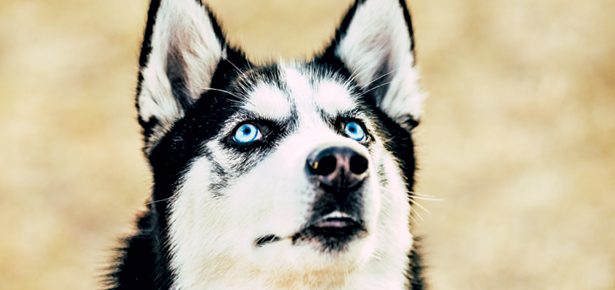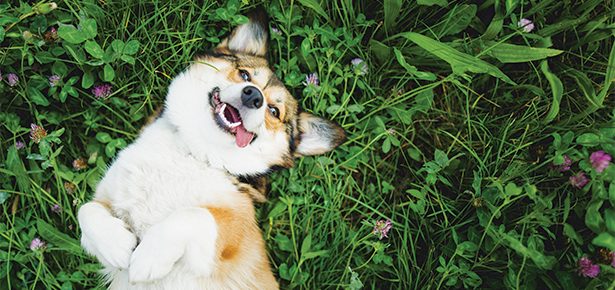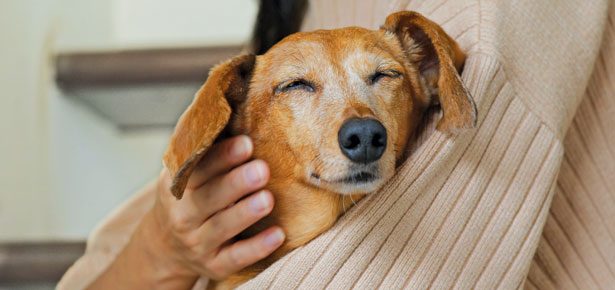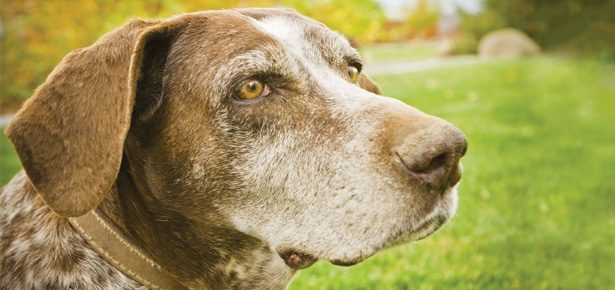
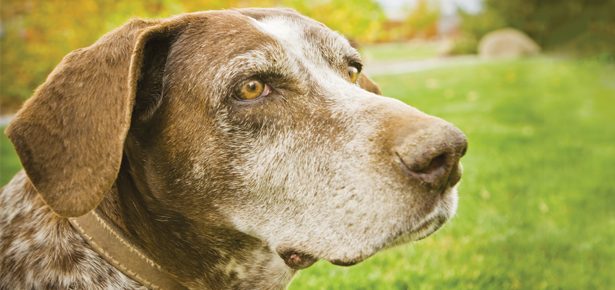
5 Signs Your Dog’s Vision is Worsening
How to watch for the signs of vision loss cause they'll hide it
By Carmen M. H. Colitz, DVM, PhD, DACVO,
Terri L. McCalla, DVM, MS, DACVO,
& Johanna Mejia-Fava, DVM, PhD
There are many signs of vision loss in dogs. Before we list five of the most common signs of vision loss, there are some things you need to know:
Dogs won't let us know when they START to lose vision. They let us know when they have lost enough vision to make big visual mistakes. Dogs that have lost up to about 80 percent of their vision easily fool their owners into assuming they can still see just fine. It is when that last 20 percent of vision begins to go in both eyes that owners typically realize their dog is losing vision. By that time, the vision loss is severe and a veterinary ophthalmologist should examine the dog. Another confusing factor is loss of hearing. A visually impaired dog who can hear frequently fools his or her owner into thinking he can see better than he is actually able, but once the hearing begins to go, the dog appears much more blind. This phenomenon can also easily occur if your dog is in pain. Chronic joint or back pain can distract dogs from using their vision, causing them to make more visual mistakes. Also keep in mind that we see with our brains and not with our eyes. The eyes collect the visual information but it is “decoded” and interpreted in the brain. Thus, elderly dogs with low vision cannot use their vision as well if they also have cognitive deficits due to dementia.
If your dog is completely blind in one eye but completely visual in the other eye, it can be very hard to determine if your dog has a vision problem because the seeing eye compensates so well. Many owners are shocked to find out that their dog is blind in one eye—and in many cases the eye has been blind for a long time.
Blind or low-vision dogs can easily fool you into thinking they can see, especially if they are losing vision slowly. They can easily memorize the furniture in your house and know exactly where objects are and avoid them.
Also, if you have two dogs, one of which is blind or has low vision, the seeing dog often acts as a “guide dog” for the blind/low vision dog. This can deceive you into thinking your dog can see better than he is actually able when really he is following cues from your seeing dog.
If your dog is diabetic, the risk is very high that your dog will develop blinding diabetic cataracts in both eyes at the same time and lose vision very quickly (literally overnight in many cases!). This typically occurs within the first nine months of being diabetic—and often much sooner. If your diabetic dog can still see, it is important to begin giving her a canine vision supplement such as OcuGLO as soon as possible. This will help to prevent diabetic cataracts from forming. It is also important to monitor your diabetic dog closely for signs of vision loss.
Signs of Progressive Vision Loss in Your Dog:
1. When you toss a treat or a toy for your dog, she does not see it. Test peripheral vision too—toss the treat or the toy to the far right and to the far left and observe how well she notices it is there.
2. Your dog is increasingly hesitant to jump off or on the bed. Your dog is hesitant (especially in dim light) to go down or up stairs or is reluctant to go outside at night unless a light is on. Note all old dogs will develop night blindness (senile retinal degeneration) from age-related death of rod photoreceptor cells in the retina, resulting in poor vision in dim light. A canine vision supplement like OcuGLO helps support rod photoreceptor cell health.
3. Your dog bumps into out-of-place furniture, such as a chair pulled out from the table, or seems hesitant/bumps into objects when in an unfamiliar room or house.
4. Your dog hesitates or refuses to jump into or out of your car (note joint disease can also play a role in this).
5. Your dog seems stunned in the sunlight. If your dog has severe cataracts, her vision is often worse in very bright light like sunlight because when the pupil constricts in very bright light, the light passes through the densest, cloudiest part of the cataractous lens.
Join the newsletter and never miss out on dog content again!
"*" indicates required fields
By clicking the arrow, you agree to our web Terms of Use and Privacy & Cookie Policy. Easy unsubscribe links are provided in every email.


